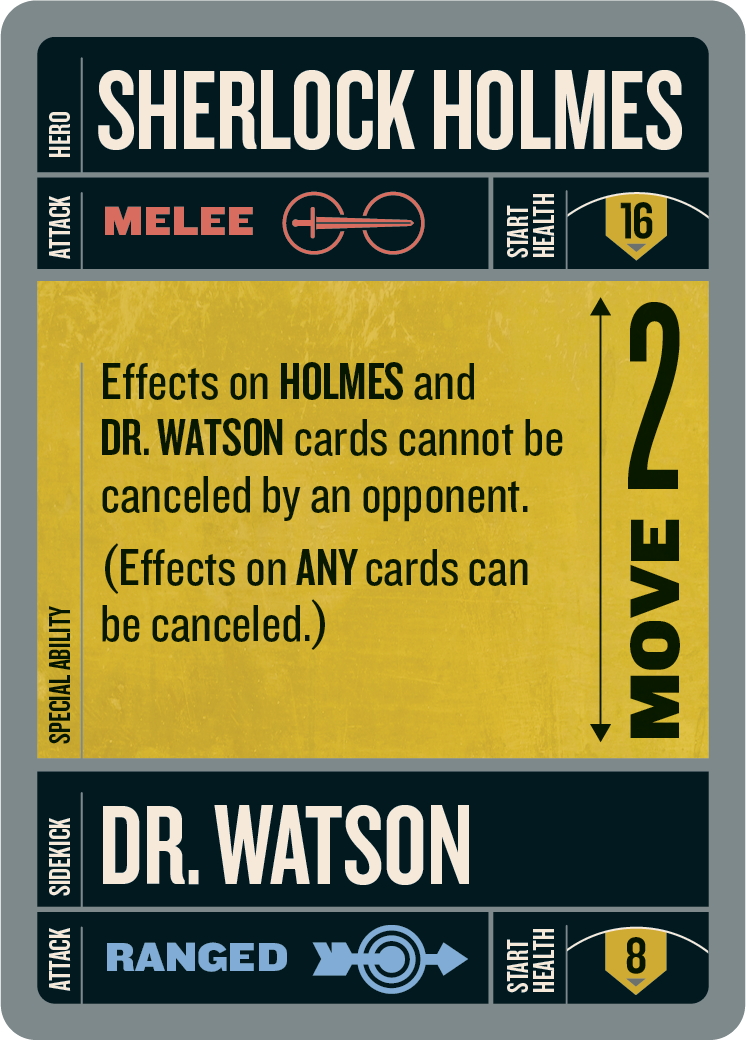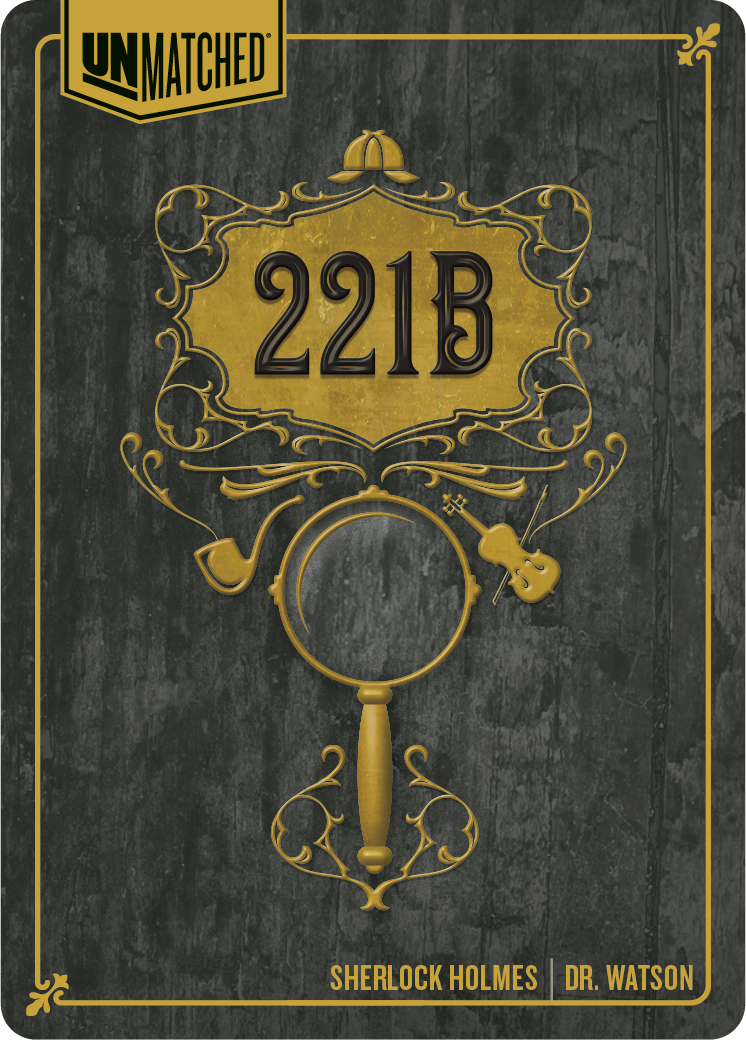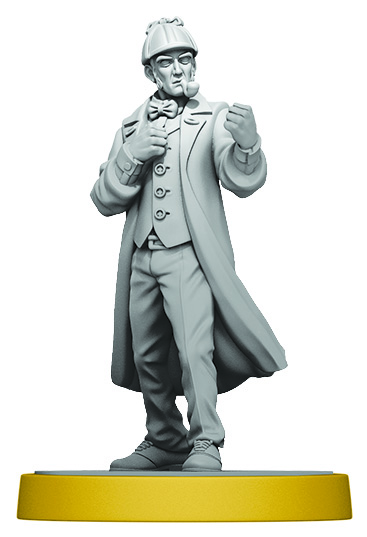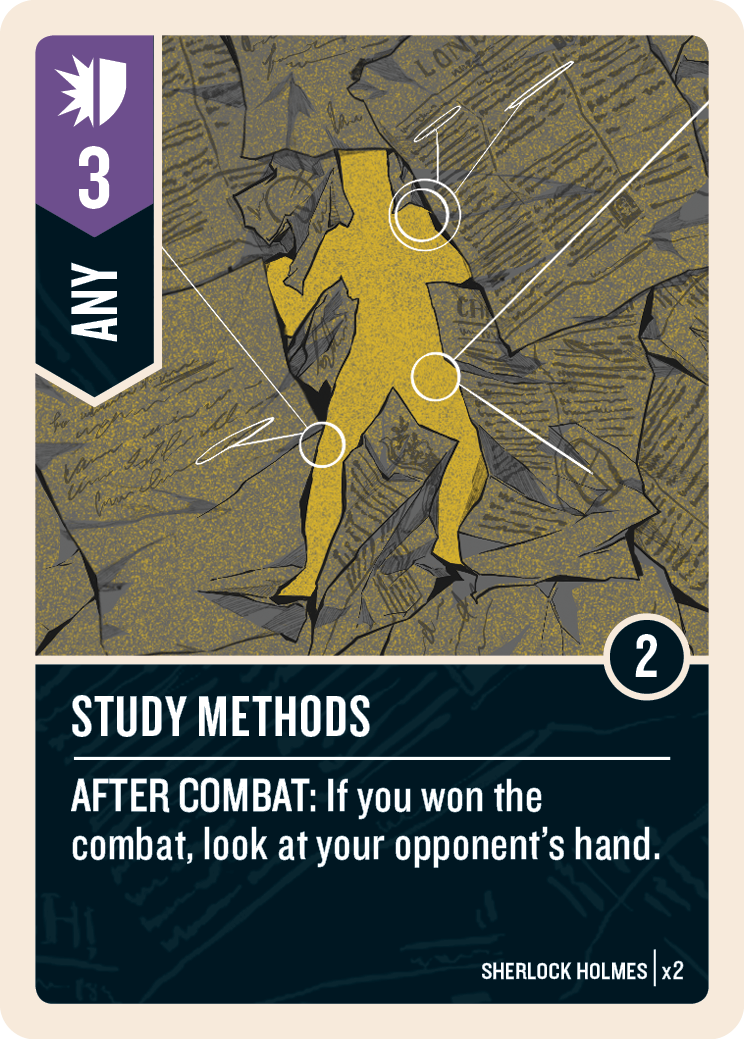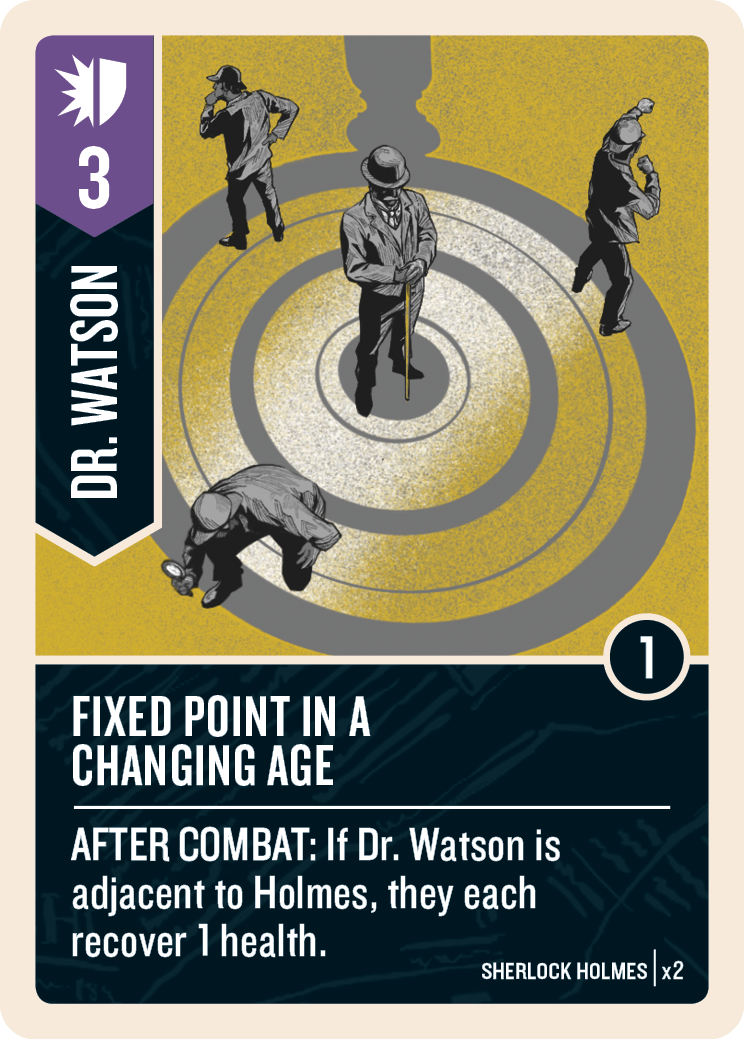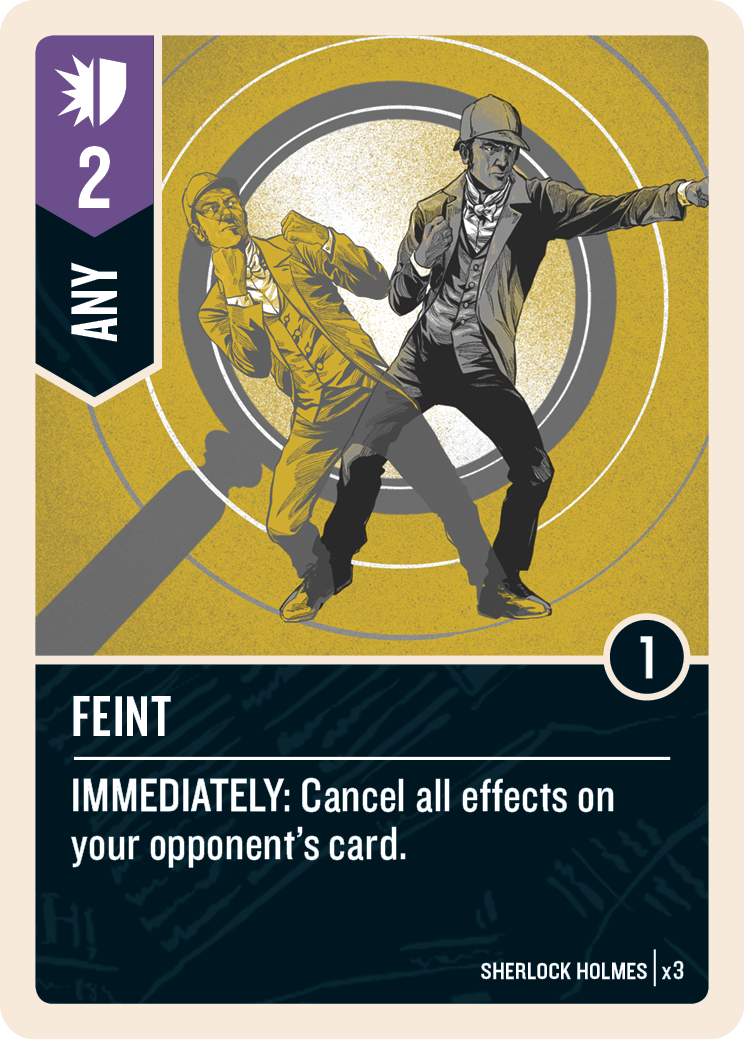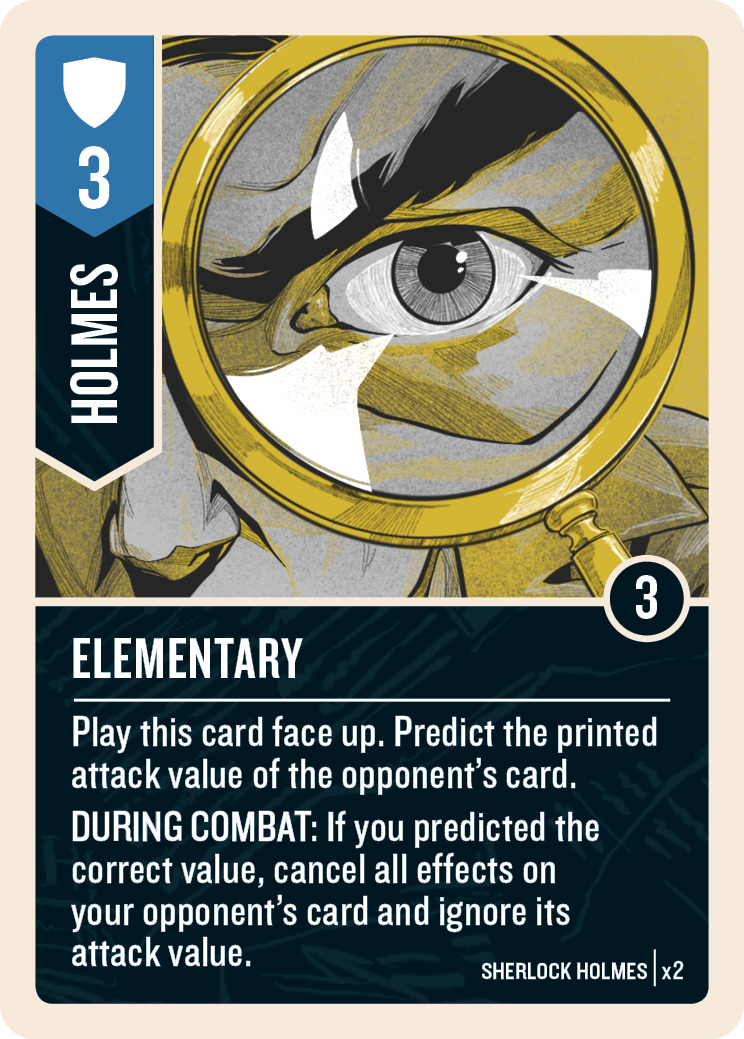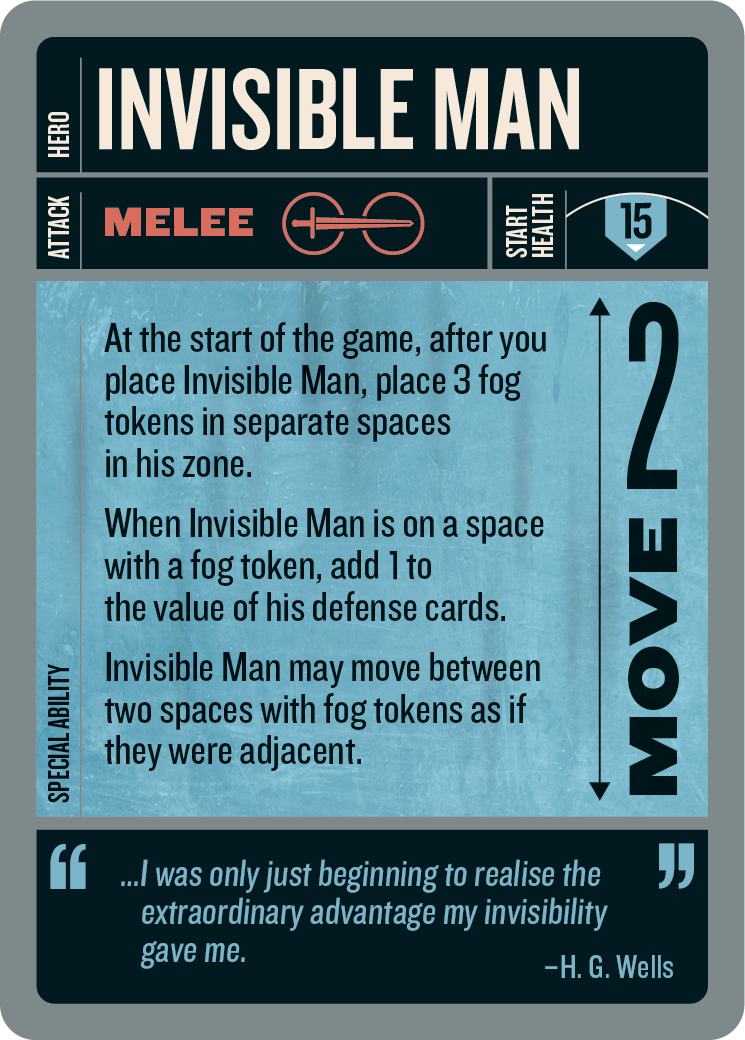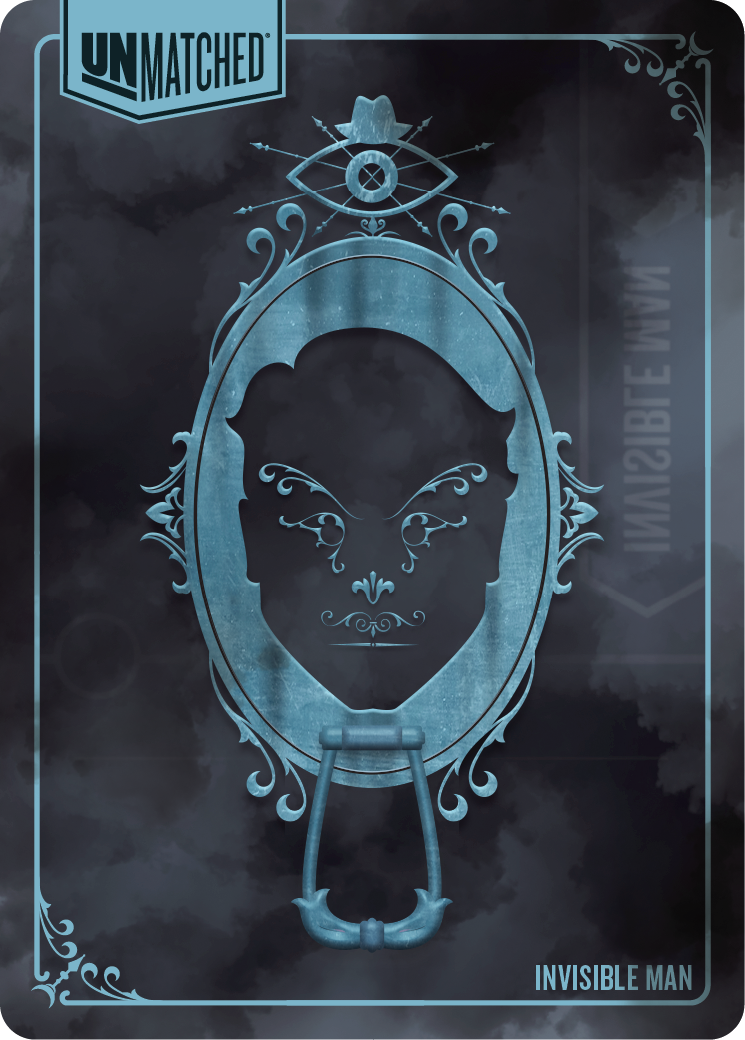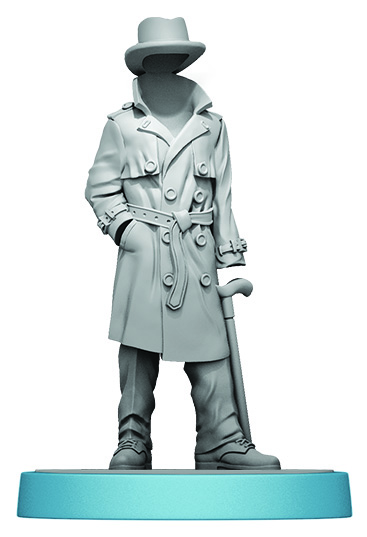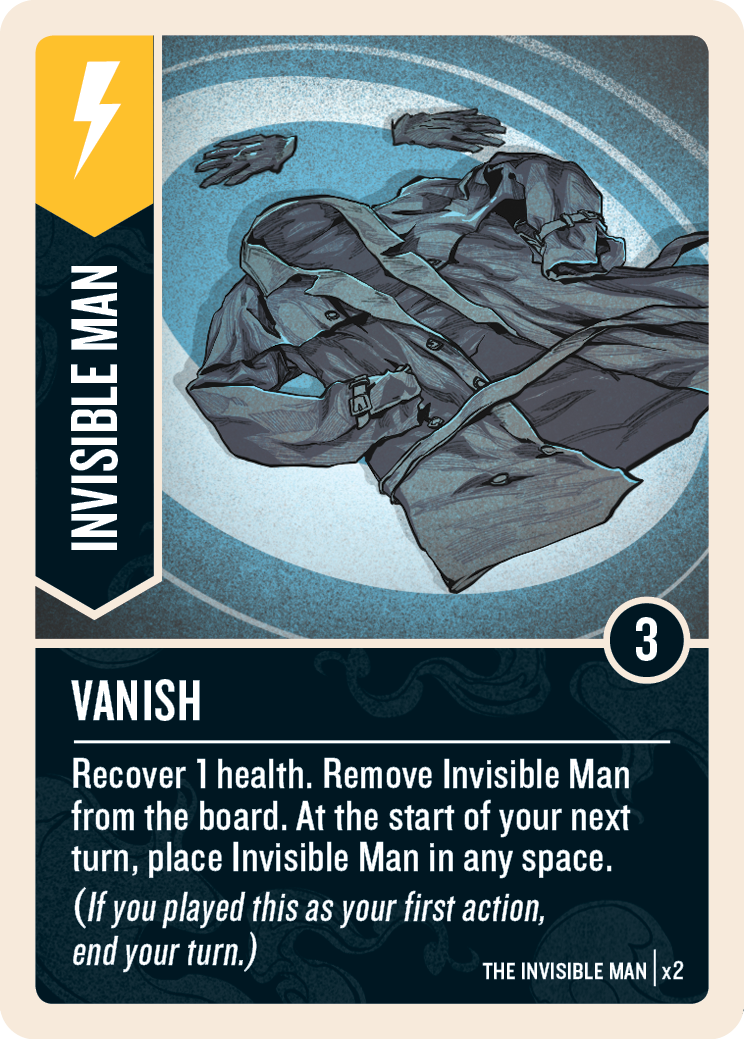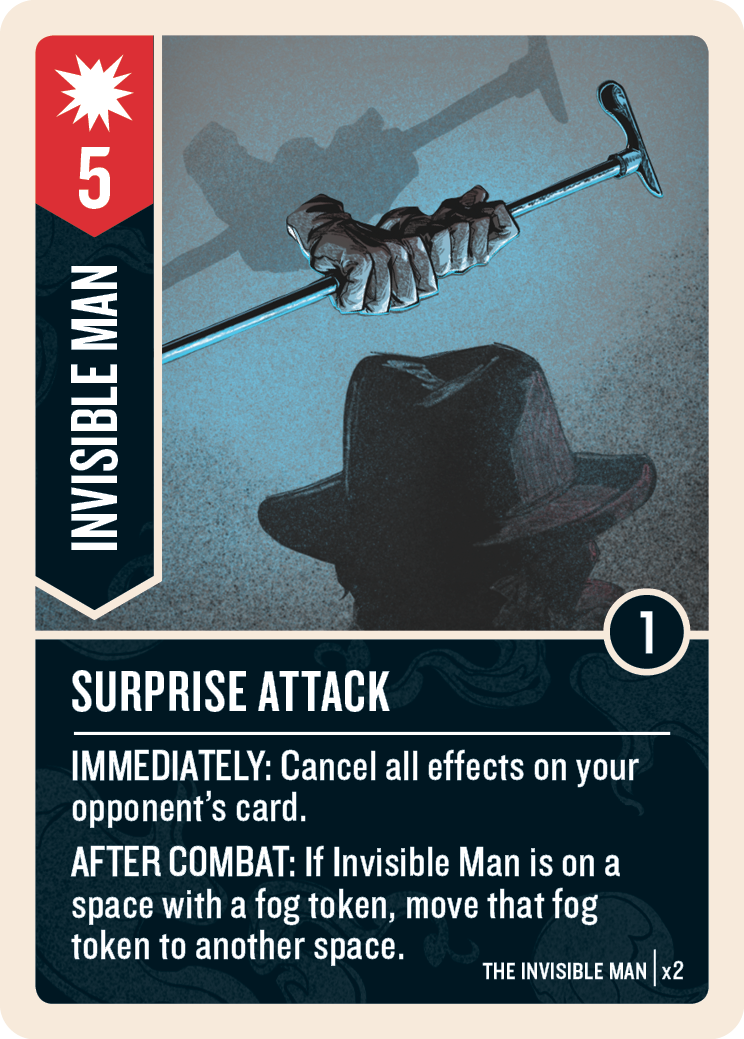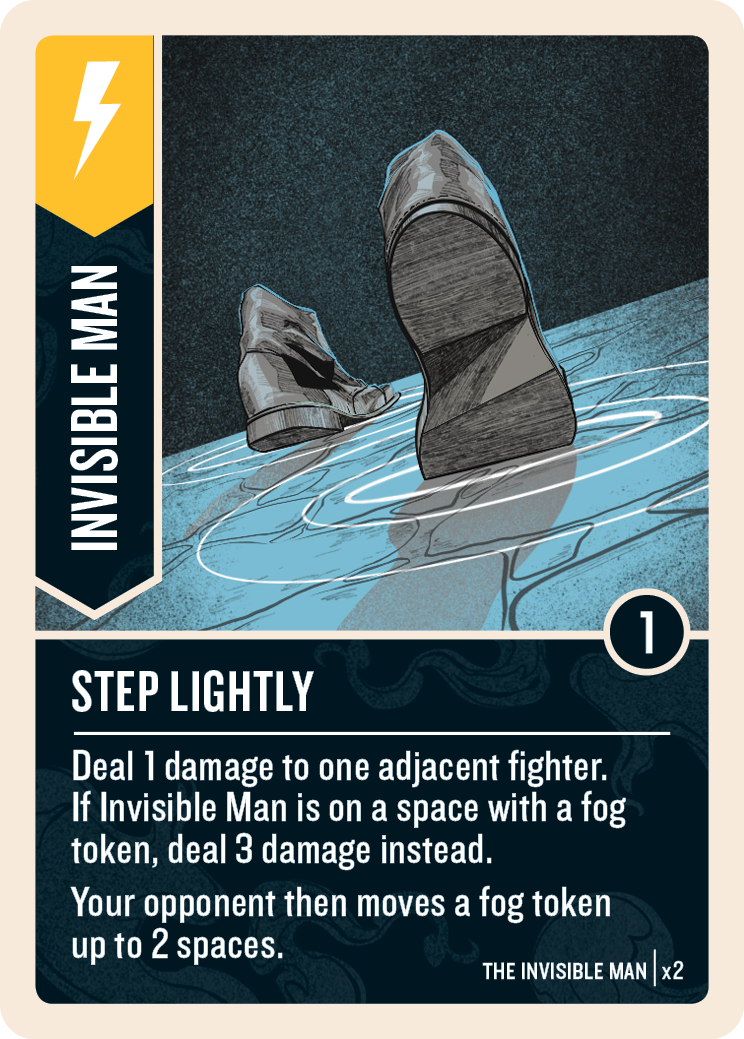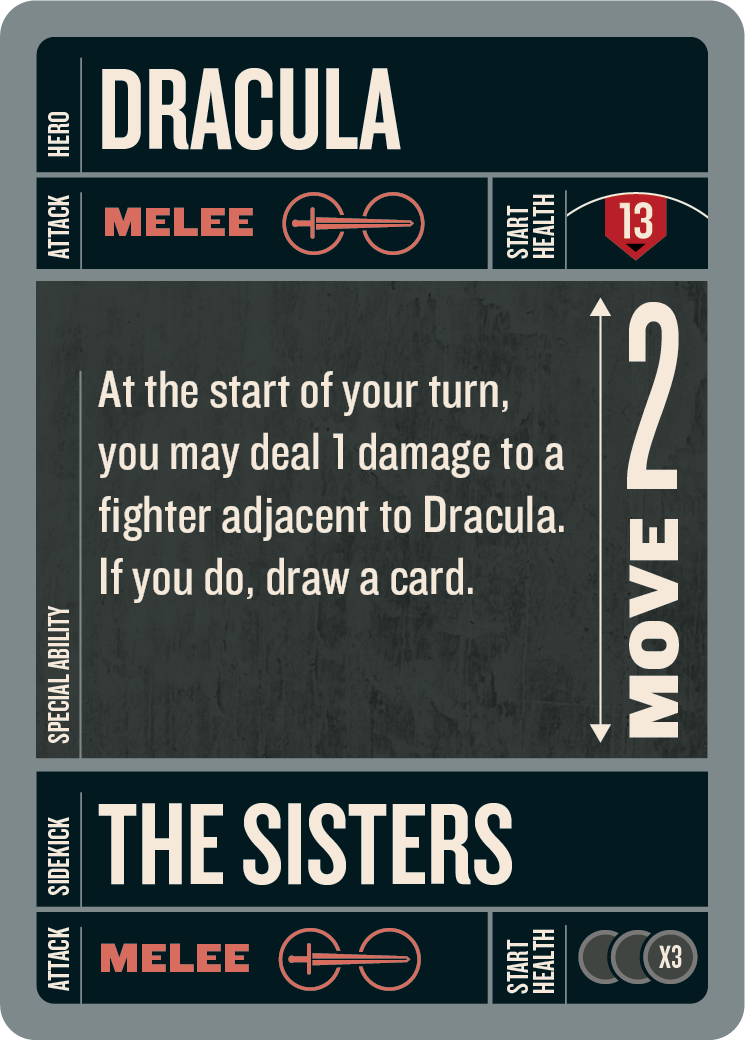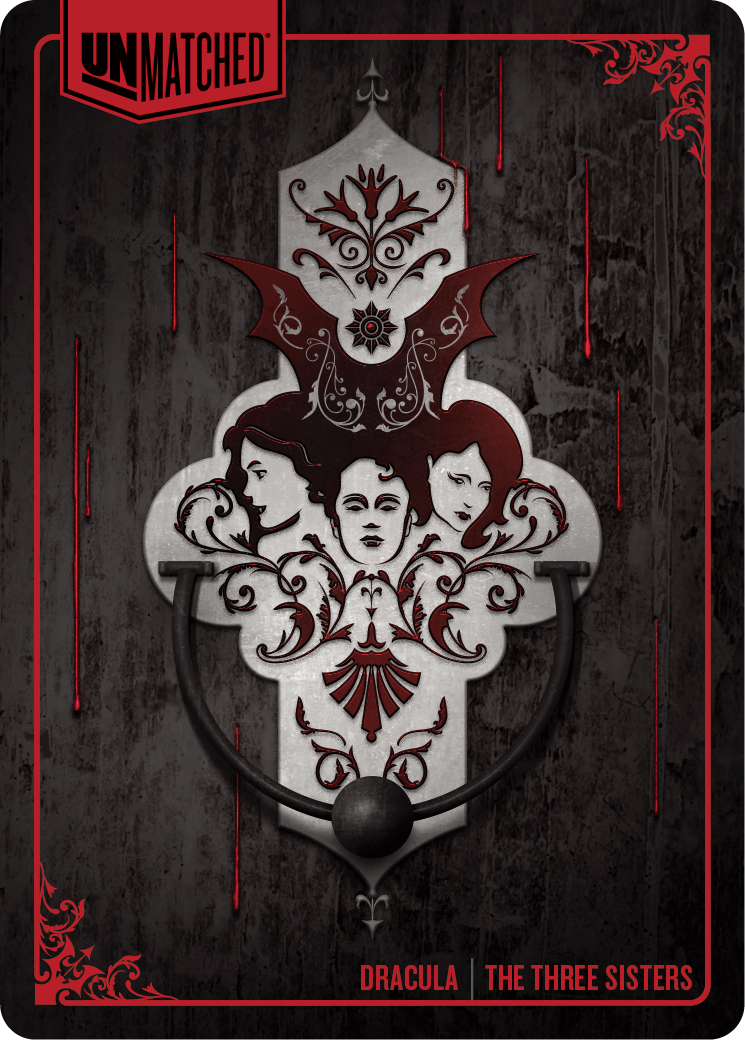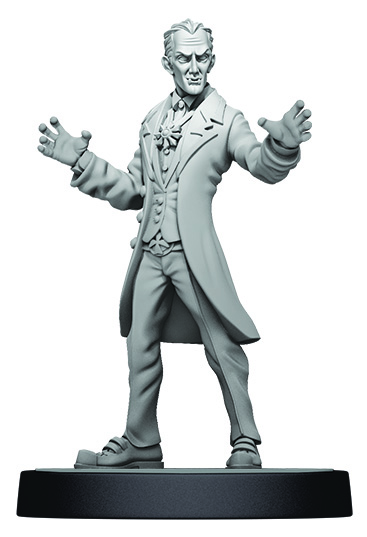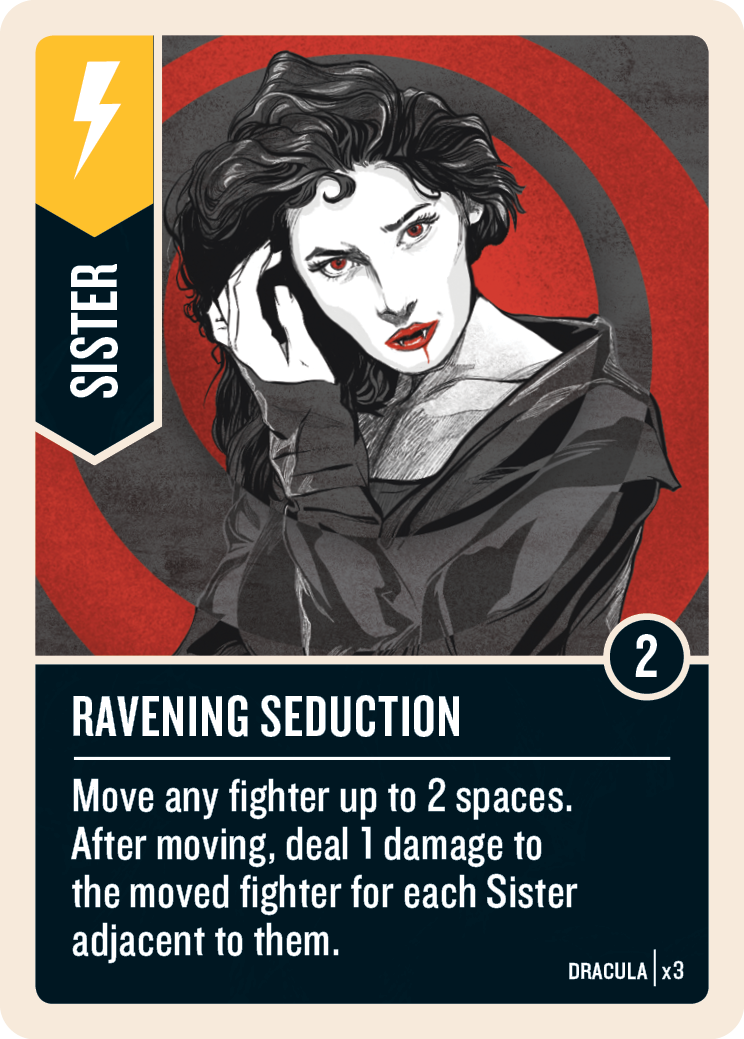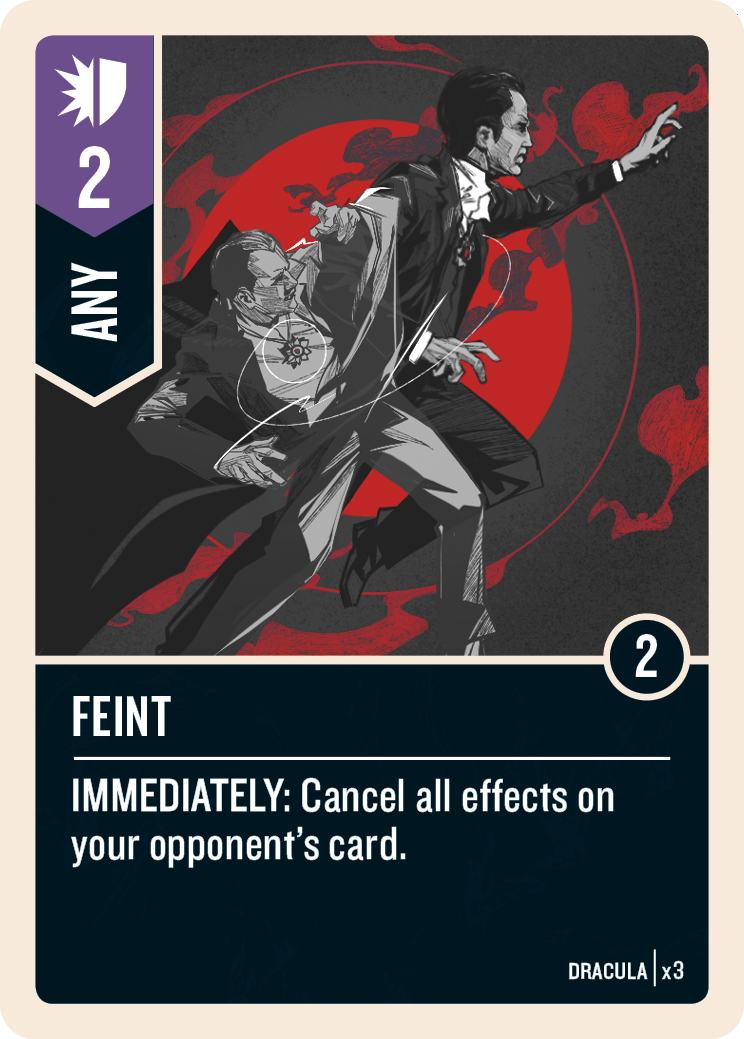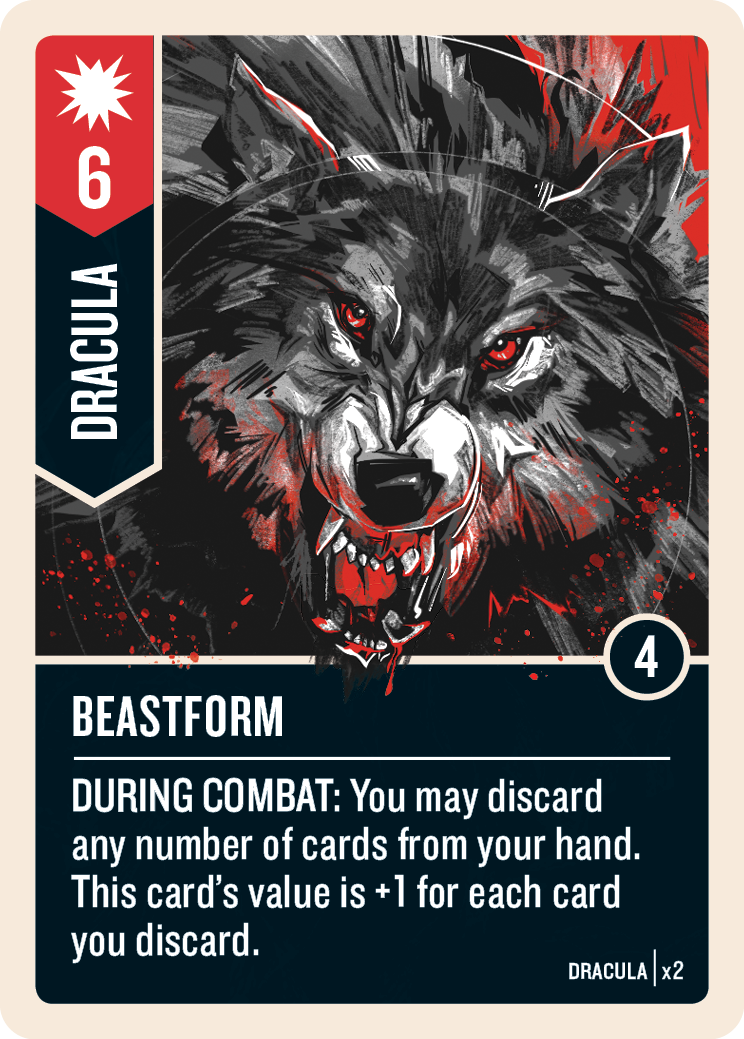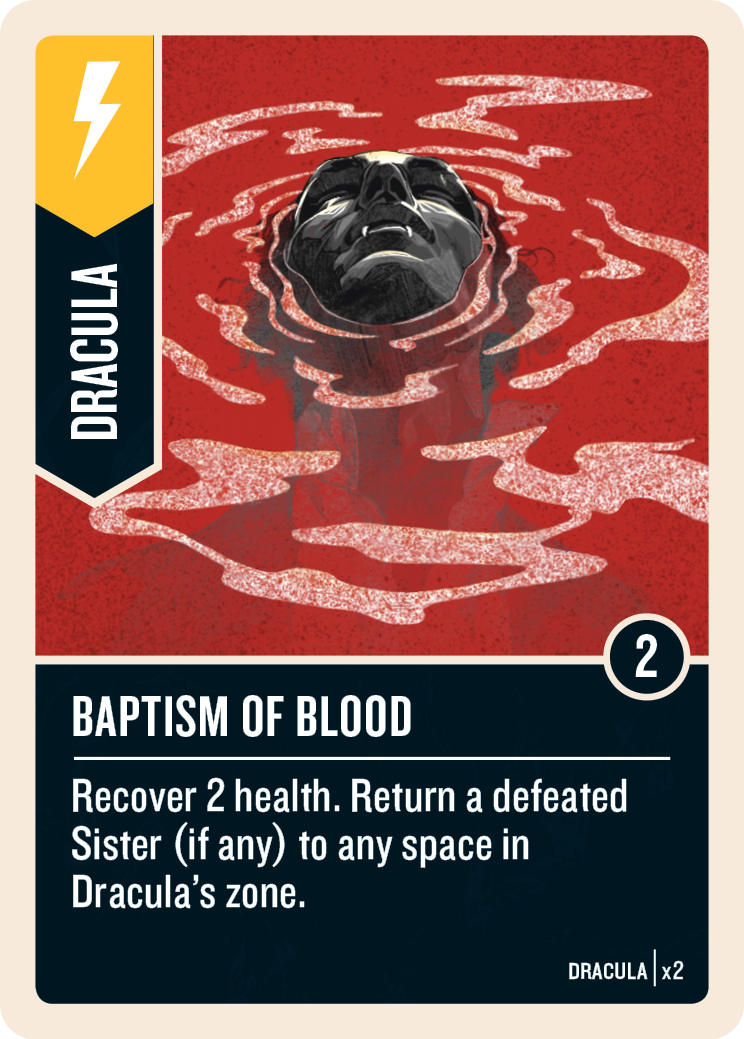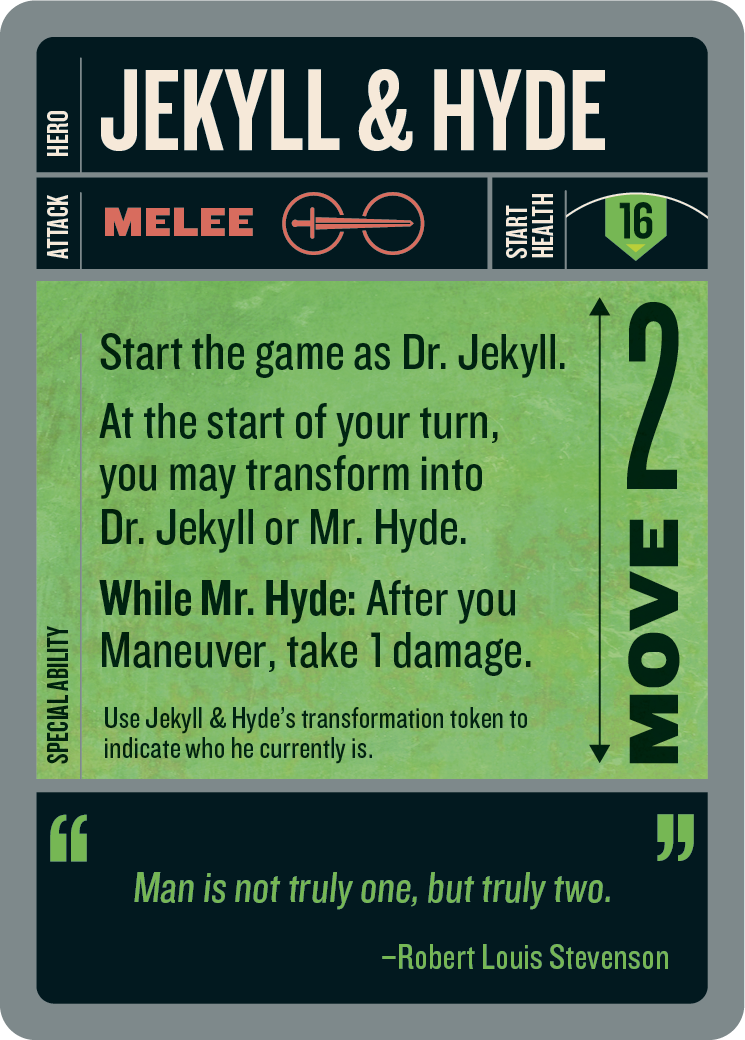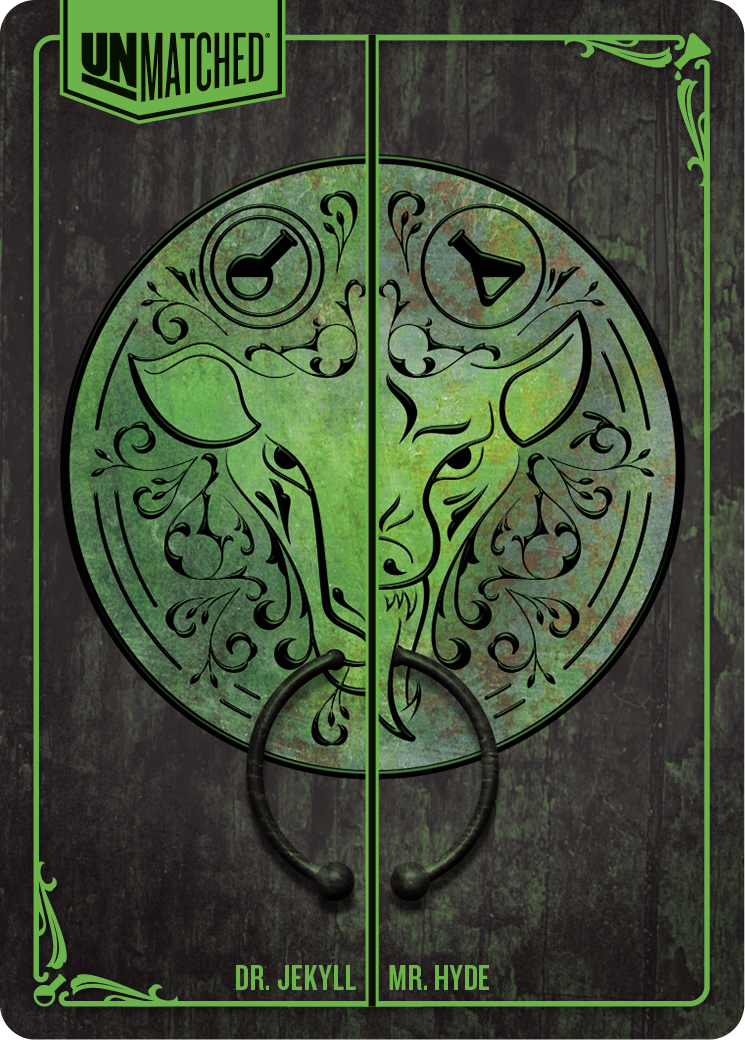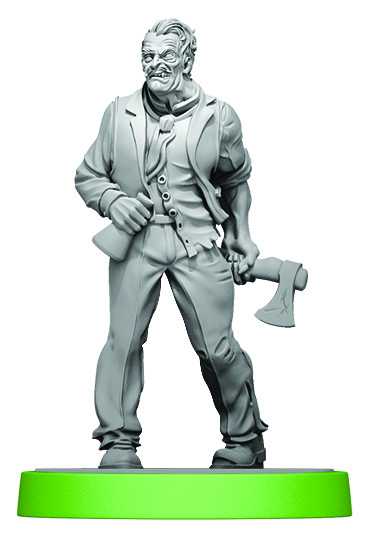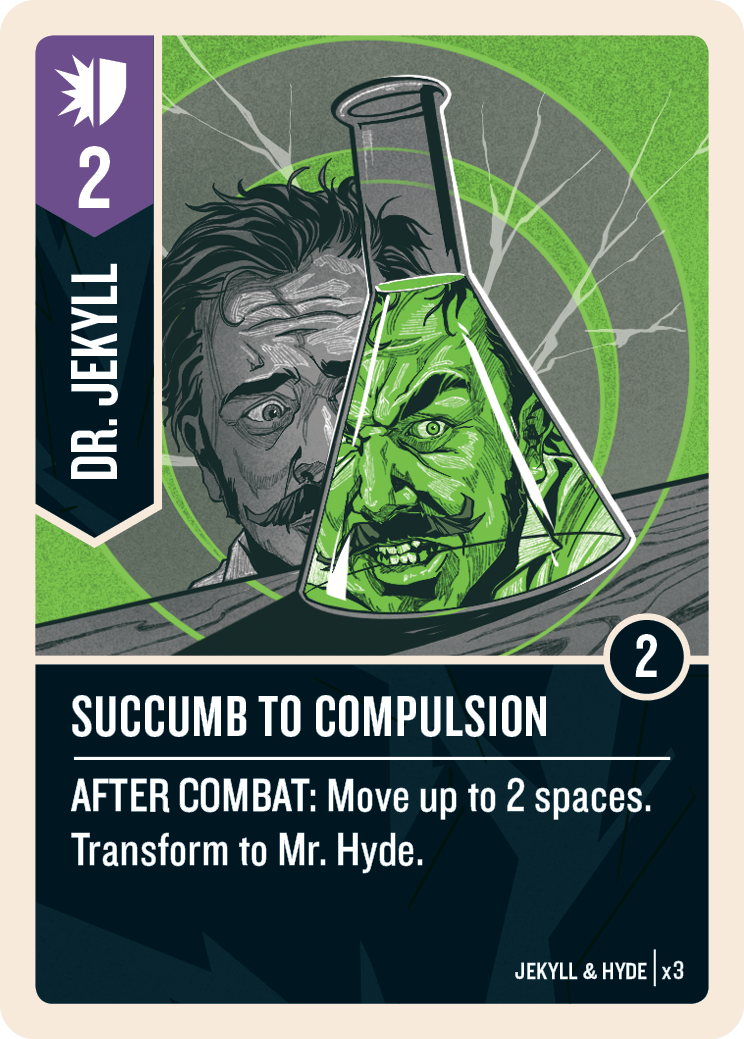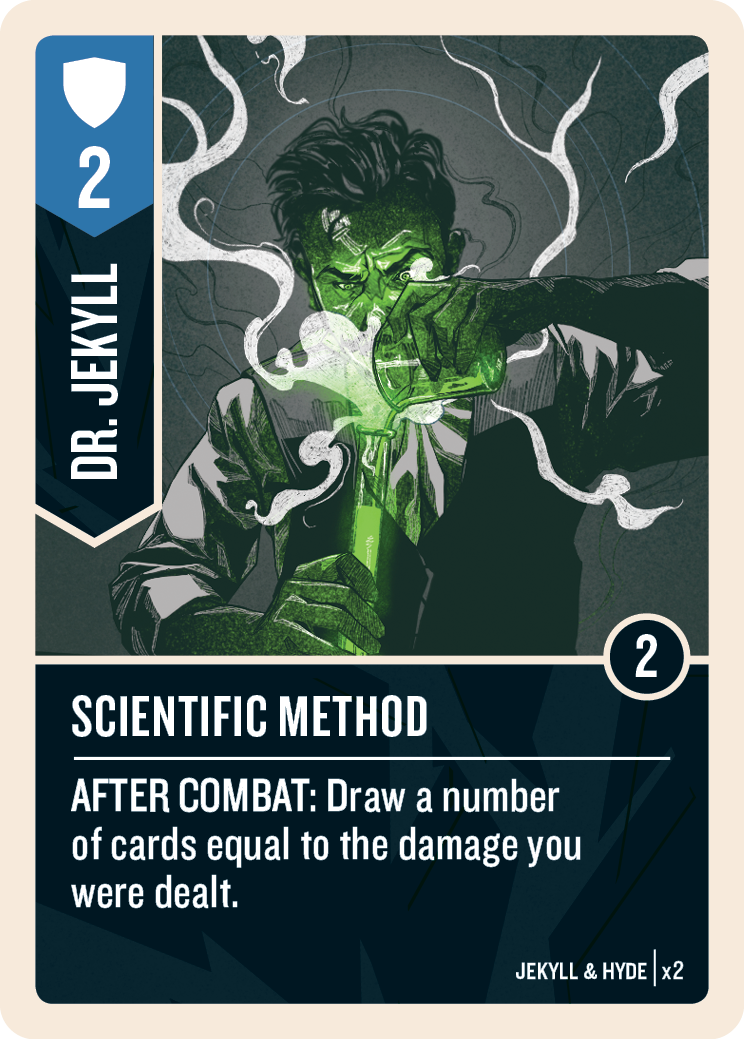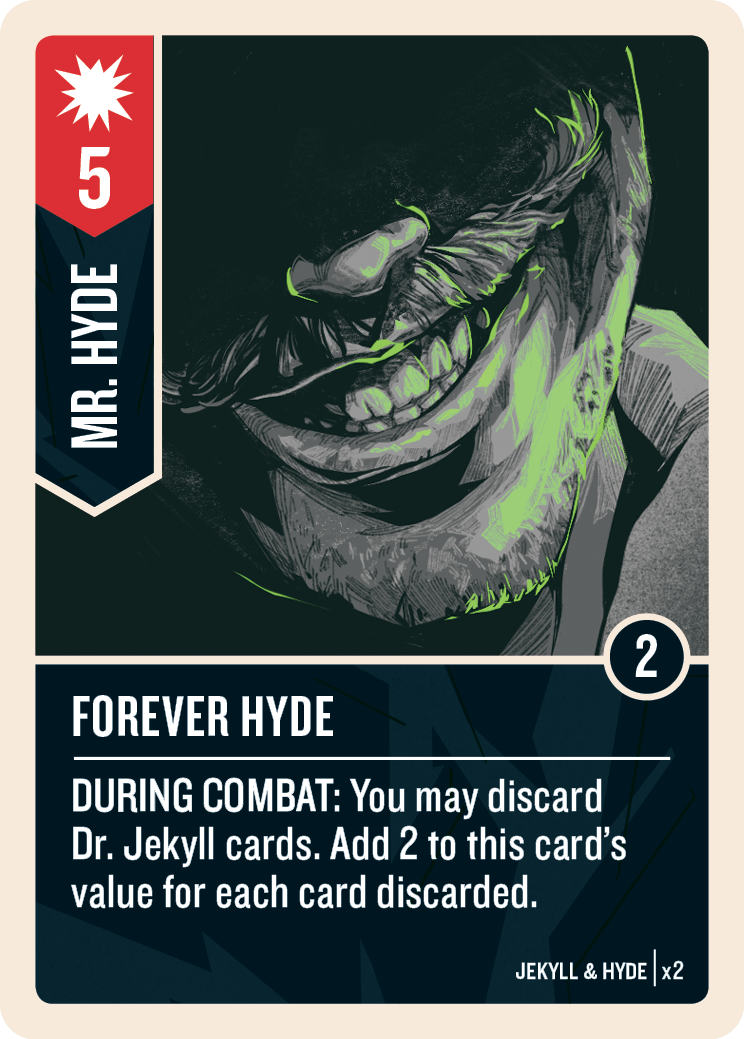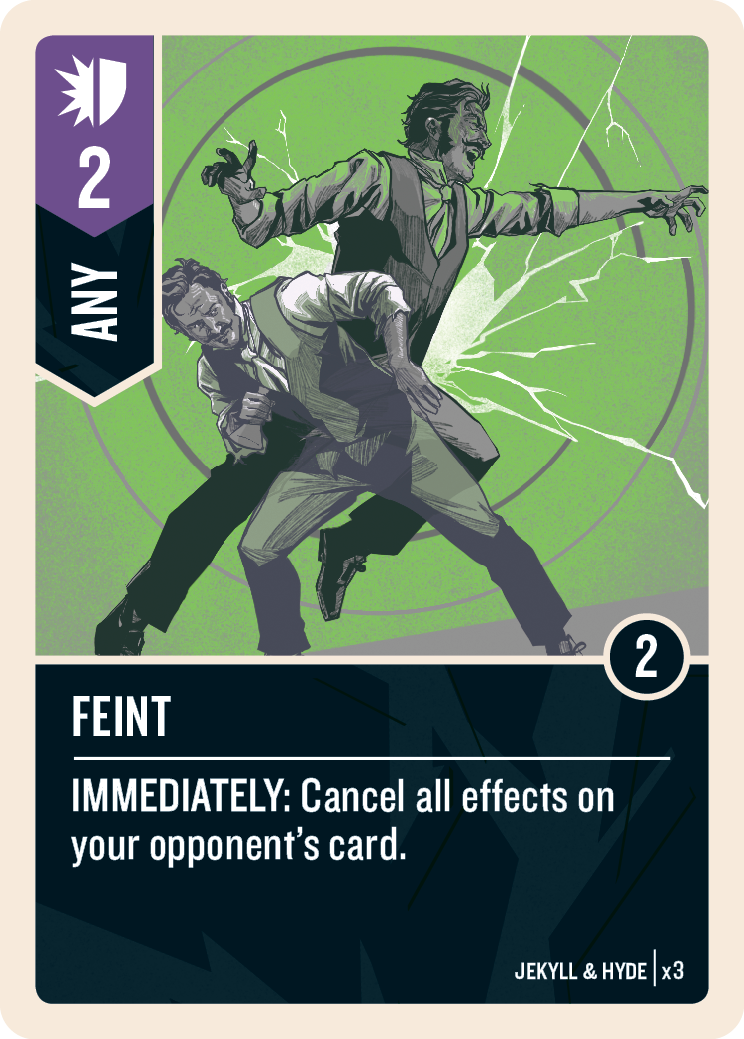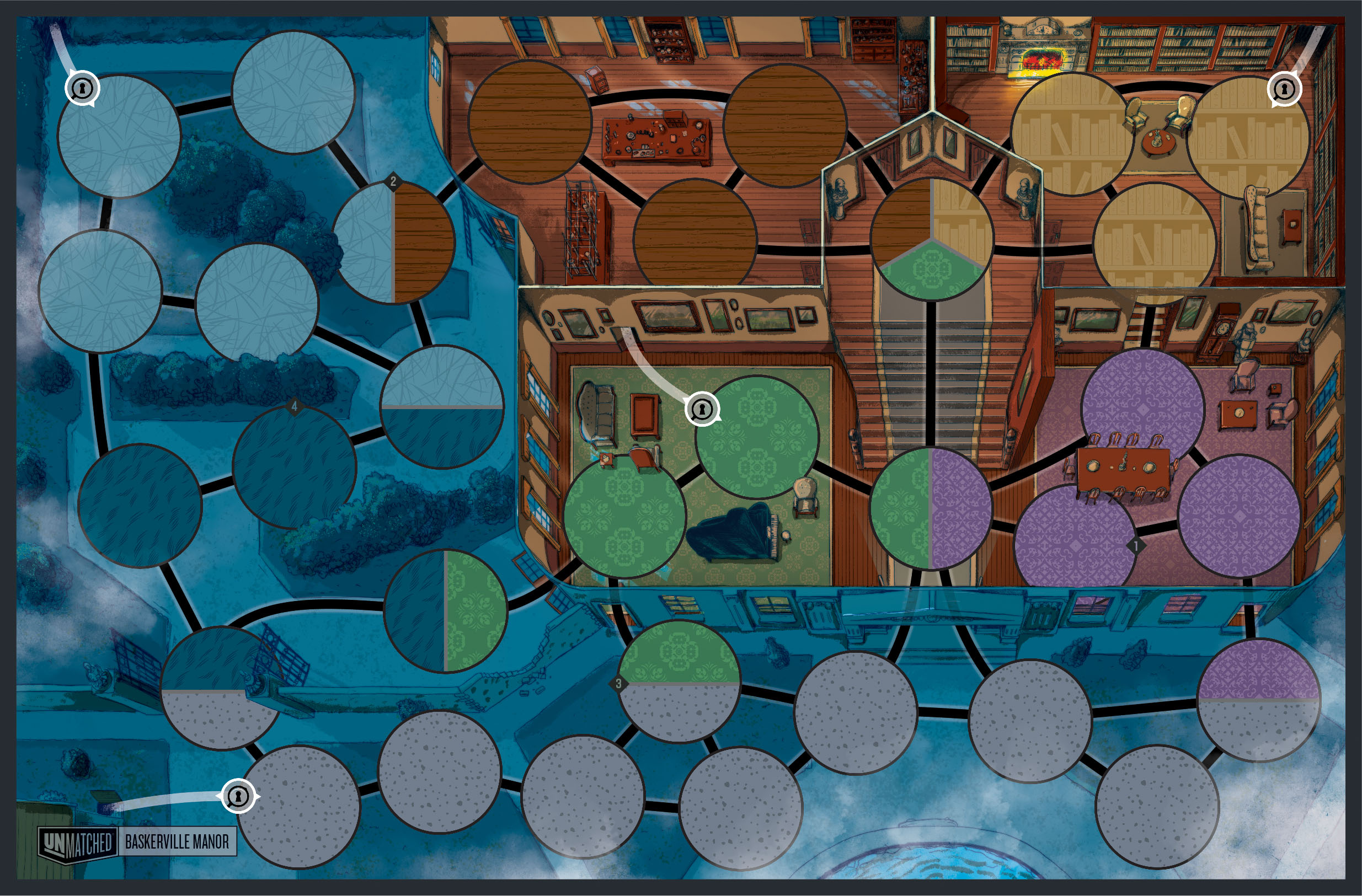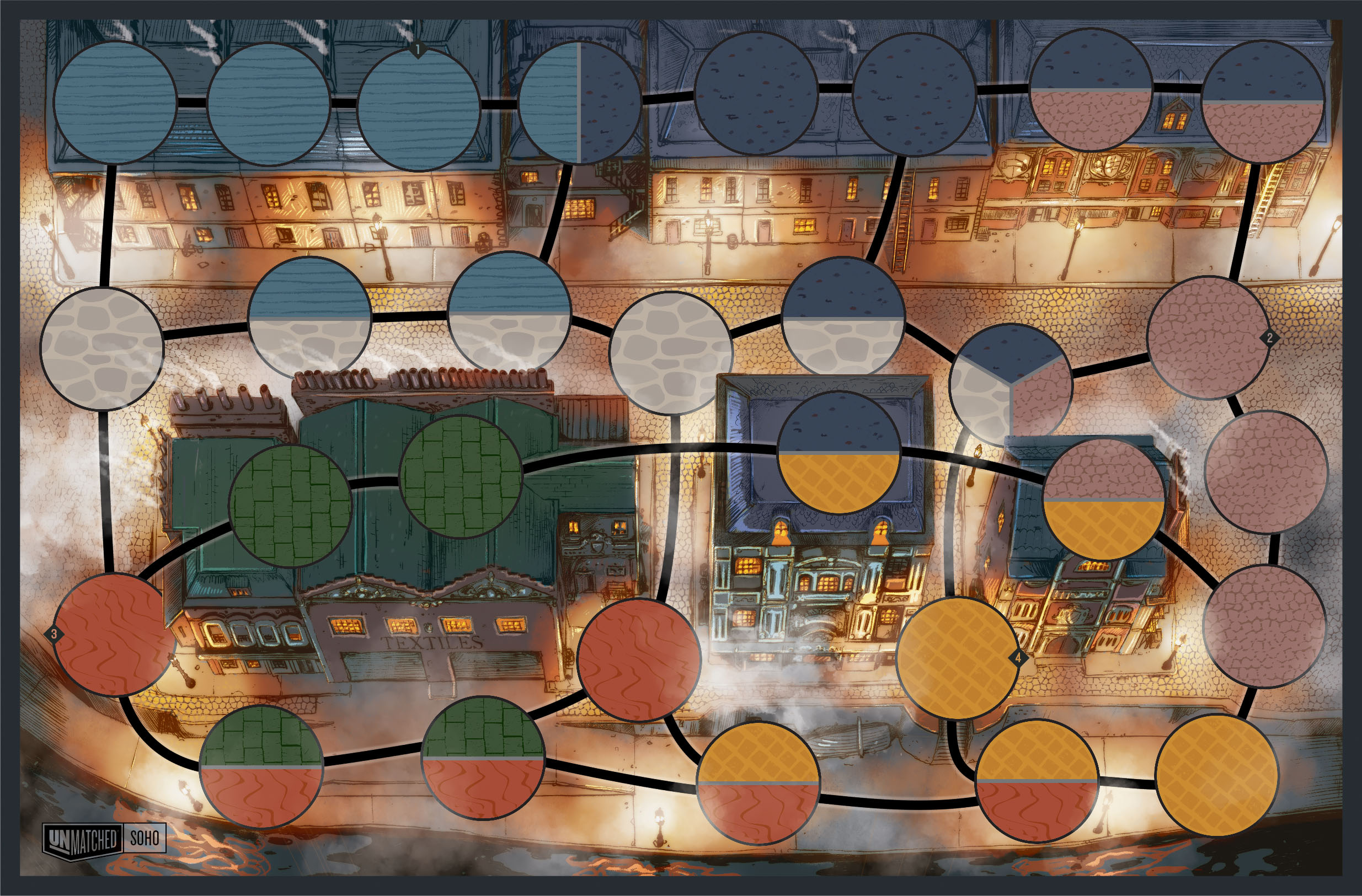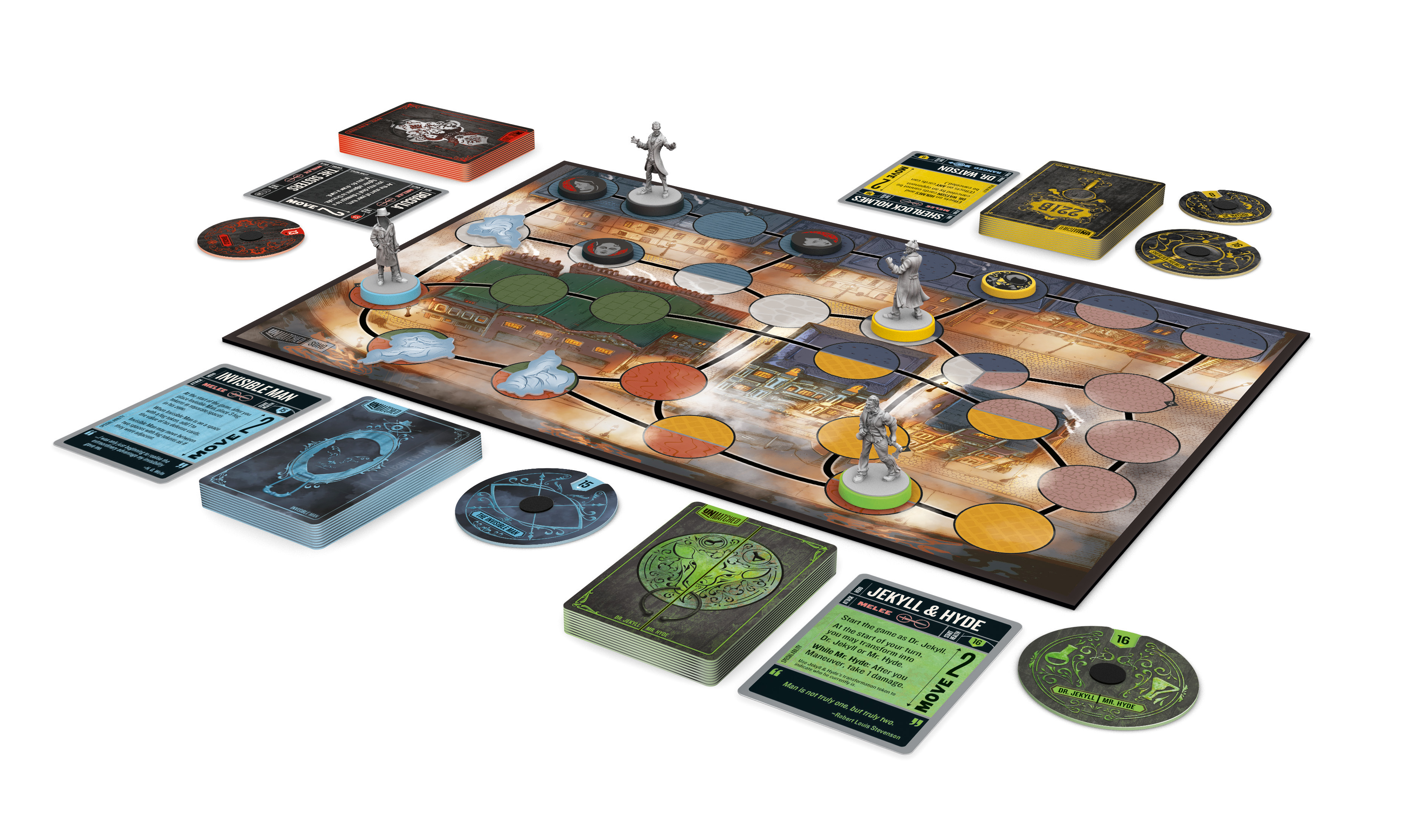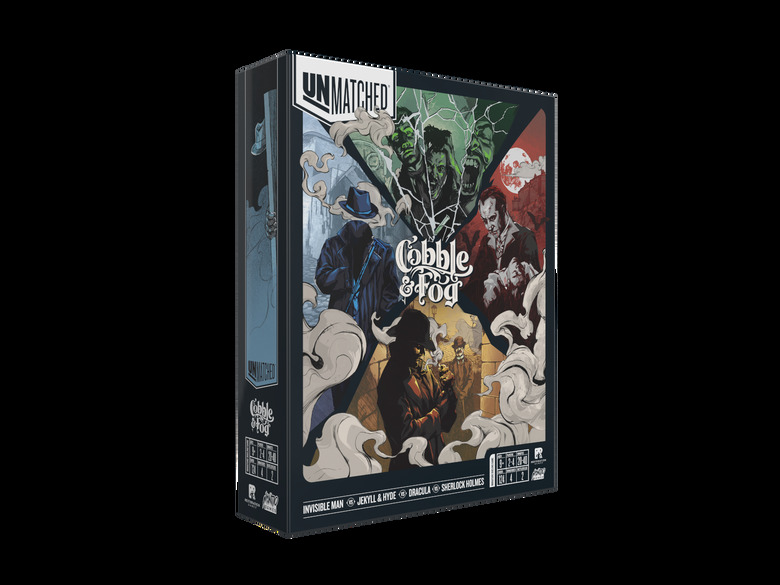Exclusive: 'Unmatched: Cobble And Fog' Reveals New Card Art And Miniatures From The Incredible Tabletop Game Series
Unmatched isn't just a great board game series – it's an excuse to play out the wildest showdowns from the depths of your geekiest daydreams. Put aside the beautiful miniatures and gorgeous card artwork. Forget about the perfectly balanced mechanics that turn each game into a nerve-wracking battle of wits and tough choices. At the end of the day, Unmatched is the board game series where King Arthur can battle Bigfoot, where Bruce Lee can take on the raptors from Jurassic Park, where Robin Hood can share some fighting words with Alice (as in Wonderland).
The latest Unmatched set (which can be played standalone or mixed with the other characters and boards) brings four new combatants to the arena. Unmatched: Cobble and Fog introduces Dracula, Sherlock Holmes, the Invisible Man, and Dr. Jekyll & Mr. Hyde, a welcome splash of iconic Victorian Era genre characters into an already nerdy buffet of riches. We had a chance to speak to the folks behind the game ahead of its upcoming release and we can offer a new look at the miniatures for each character, along with some stunning card art.
A Victorian Battle Royale
Unmatched: Cobble and Fog is, like the previous sets, a collaboration between Restoration Games and Mondo Games, a team-up that ensures the ideal collision of polished gameplay and stunning art design. And after introducing Bruce Lee and Jurassic Park characters to the game in recent expansions, Cobble and Fog returns Unmatched to the world of iconic, instantly recognizable characters who don't require complex licensing rights to bring them to life. But it wasn't just the accessibility of Dracula, Sherlock, Jekyll/Hyde, and the Invisible Man that appealed to designer Rob Daviau."We actually did research and found out that three of these four characters were all published or created within [a few years] of each other in London," Daviau told us during an interview over Skype:
"Dracula was 1897, Jekyll and Hyde was ten years earlier. Yeah, it was within a ten year period. 1886 to 1897, there were these four characters that basically came out that still exist today, that have spawned movies and books. There was this weird fertile period of imagination that was Victorian and spooky and gas lamps and fog, and they sort of stuck around. People still know them. This works, and visually, we could picture mansions and foggy streets, and we just ran with it from there."
As for the Cobble and Fog title? "I came up with the name as a working title, and no one ever told me to take it off the box, so it got published that way."
And while these characters are literally iconic, that didn't mean creating art for them was easy. Illustrator Andrew Thompson told us about finding new ways to represent such famous figures:
"I like Sherlock as a character and I've been a big fan of the BBC series and stuff like that. I actually worked in a reference to the BBC Sherlock in one of the Sherlock cards. There's a pose where I have Sherlock kind of holding his hands up like this, and that was from the show, and that was my little easter egg that I put in there. But for the other characters, I had never really done vampires, or, like, Jekyll and Hyde was also another very interesting character to play around with. The Invisible Man was probably the most challenging design hurdle to figure out, because I was like, 'Oh, I can't use facial expressions or a smirk on the face to show what this character is thinking or create a mood.' So it was a very interesting challenge to tackle that character."
Ultimately, art director Jason Taylor decided that the best path forward with these characters was to return to the source material and stick to what made them work in the first place:
"I wanted to be true to the novels a little bit moreso, necessarily, than what we're used to. And I think that's a fun twist. If it was something that people aren't necessarily aware of with that character, it's a nice thing to kind of bring back into the light. I'm sure people know Dracula can turn into different things, but we have cards in there where he's – we don't really go into him changing into a bat, we go into the wolf and things like that. To me, the way to make them different is going back to the roots of the character. [We] really went through color quite a bit. I think we ended up with a cool spot, where it almost feels like you're watching an old black and white movie, but the color comes in where the imagination would be. So it's like you're watching one of these old horror films in your mind somewhat."
In a lovely touch, each character's deck of cards in Cobble and Fog is connected by complementary art – the back of each deck showcases an era-appropriate door knocker, with each representing the character in a clear and clever manner. Pay close attention to the back of the Invisible Man cards – yes, that illusion of transparency is intentional and very clever.
Sherlock Holmes
Sir Arthur Conan Doyle's legendary detective is traditionally more of a thinker than a fighter, an element that is woven into how the character plays. As you can see from the character ability on the card above, Holmes is always the smartest man on the board, able to shrug off any attempts to cancel his cards. As Daviau explained:
"Sherlock is smart. He can deduce what's going on and he can't be fooled. So his effects can't be canceled. If you play a feint on him, he's like, 'Nope, I knew you were going to play a feint, and my effect still goes off.'"
But Holmes isn't above getting down and dirty. As his miniature showcases, the famed consulting detective is a trained boxer and he's ready to throw down from close quarters. Naturally, Dr. Watson is along for the ride as his sidekick and provides ranged attacks with his firearm.
Sherlock's cards also play into the character's intelligence and you can already see possible combos in the samples above. Some cards allow the Sherlock player to examine their opponent's hand of cards, while others allow them to cancel cards by predicting what the opponent is playing. Says Daviau:
"He has cards that let you look at a person's hand, and then he's got other cards that, when he plays them, he tries to guess the number of the card you played and then is basically cancelled. So I can look at your hand and then go, 'Oh, you have all threes. Now I attack you.' And you're like, 'Fine.' And you're like, 'That's a three!'"
And while Sherlock is off being the smartest man in the world, Dr. Watson provides constant support to his old friend, as some cards allow them to heal each other by being in close proximity. But Daviau says Sherlock has one nifty ability that turns every other character on the board into a chess piece:
"Sherlock sometimes has disguises – he can switch places with Watson or other characters. 'I was over here the whole time! You think one of Robin Hood's outlaws are one of yours, but it was me, Sherlock, in disguise! And now I'm right next to you, Robin Hood!'"
The Invisible Man
Quite frankly, the rendering of the Invisible Man miniature doesn't do the finished product justice. In order to fully appreciate how clever the design is, you need to see it from several angles, which Daviau helpfully showcased on video during our interview.
It would've been easy to depict H.G. Wells' iconic villain wrapped up in bandages, as that's how he spends the first chunk of the original novel. But how do you do something more dynamic? Taylor explained the challenges of realizing the character when his entire appeal is that he cannot be seen:
"The challenge of the Invisible Man, even for the sculpt – I remember the conversations we had for just the sculpt on Invisible Man and how there's the low-hanging fruit. 'Let's just not do anything. Let's just have a base.' [laughs] Then there's, 'Okay, let's do a sculpt and make it out of clear resin.' But we wanted to be more special than that. We wanted people to be like, 'Oh, that's great!' We weren't even sure how we would necessarily pull it off."
This final look, which blends the fashion of the time with an unnerving lack of humanity in the right spaces, captures the unnatural terror of the character perfectly.
As you'd expect, the Invisible Man relies on getting around unnoticed and unleashing devastating surprise attacks to take down his opponents. "The Invisible Man uses fog tokens," Daviau explains. "These tokens move around the board. The Invisible Man has cards that are improved by being in fog. More importantly, the Invisible Man treats all fog tokens as adjacent when moving, so he can appear almost anywhere."
As you can see in the cards above, the fog tokens can be devastating, allowing a player to set up traps and make quick escapes. That makes him a heavy-hitter who can flee before his enemy can react, sometimes even vanishing from the board entirely. Like the best of Unmatched, it's the perfect blend of theme and mechanic.
Dracula
Bram Stoker's iconic vampire is no stranger to board games, having starred in more than his fair share. So how does Unmatched: Cobble and Fog breathe new life into the undead legend? To hear Daviau describe him, this Dracula is a bit of a glass cannon – weaker at first than his opponents, but able to deliver powerful and terrifying attacks when he needs to do so:
"Dracula is relatively weak. He doesn't have high health or a lot of defense, but you regularly gain health from other people. He can ping his own sidekicks [the vampire trio known as the Sisters] to steal health, but if he starts his turn adjacent to you, he takes one of your health and then draws a card. But he's got a couple killer things in there. The beast form card is brutal. So he has to be played well. He is that refined gentlemen. He's pinging and dancing and disappearing and using his sisters and recovering health, and then suddenly he snaps and turns into a wolf. And if you're not ready for it, that's kind of the end of you."
The artwork for the Dracula cards gave Taylor and Thompson a chance to really indulge in the horror aspect of the character. "I think one of my favorite things is going over the top where we can," Taylor says. "One of my favorite things is when you look at the cards for Dracula, there's a lot of blood in there, man."
"There's one that's just a puddle," Daviau says while flipping through the deck of Dracula cards. "'Feeding Frenzy' actually has arterial spray. But 'Baptism of Blood' is just Dracula's face in a pool of blood."
Since Dracula is fragile compared to other fighters (which makes sense, considering the weaknesses and limitations that come with being a vampire), he requires crafty play. This means using his sidekicks to manipulate the board and other players, as seen in the cards above. And since Dracula can grow more powerful by draining the life force of others, he can maintain his life even as he whittles away at others. That opens the door for some of the game's most powerful attacks, like that "Beasthood" card, which can devastate an opponent who scoffed at Dracula's low starting HP.
Dr. Jekyll and Mr. Hyde
Robert Louis Stevenson created Dr. Jekyll and his evil counterpart Mr. Hyde to explore the dichotomy of humankind and our capacity for indulgence, self-destruction, and chaos. The Unmatched take on the character leans into this: the more Jekyll/Hyde destroys themselves, the more powerful they become. As you can see from the character abilities on the card above, simply existing as Hyde runs down those precious hit points, so players will have to use the doctor's inner evil self sparingly or risk total annihilation.
Even the miniature is thematically appropriate, with Jekyll and Hyde existing within the same hunk of plastic, two personalities tearing one body to pieces. "He's split left and right," Daviau says. "So on this side, he's Jekyll, he's holding a flask, his face is normal, his foot is straight. And then if you turn him around the other way, he's Hyde. He's got an axe, his mouth – it's like Two-Face. His mouth is in a rictus on that side, his pants are more creased, and his leg is back at an awkward angle."
Much like how Alice from the Unmatched: Battle of Legends set can swap between "big" and "small" using a cardboard token, Jekyll/Hyde players can flip their token if they want to make use of the doctor's defensive, utilitarian style of play or hit their enemies hard as his psychotic counterpart.
"Jekyll and Hyde are their own sidekicks," Daviau says. "You basically get a token with a potion or elixir of whether it's Dr. Jekyll or Mr. Hyde. And then there are some cards that are Jekyll cards and some cards that are Hyde, so you have to choose which one you're doing."
You can see the differences between Jekyll and Hyde in the cards above. You use Jekyll to get around the board and recover from encounters. You then turn into Hyde to deal extreme damage, sometimes literally sacrificing Jekyll cards to get the job done. As Daviau explained:
"Hyde cards are all attack cards, but he actually takes damage when he maneuvers. And Jekyll is a scientist. He doesn't have as many attack cards, but he can maneuver and draw the cards and get prepared. And then you flip into Hyde and you might take some damage closing in on your opponent, but then you wail on 'em and then run away and become Jekyll."
The New Battlefields
As with the previous sets, Cobble and Fog comes with a double-sided board offering players two new battlefields on which they can test their mettle. The Soho map lets players duke it out on the cobblestone streets, through the narrow alleys, and over the rooftops of London's West End. The Baskerville Manor lets players explore the spooky home to one of Sherlock Holmes' most famous cases, taking them through the foggy moors and offering secret passageways that allow for quick navigation of the map.
Of course, part of the fun for longtime players will be letting other characters from previous sets loose in these locales. Who doesn't want to see a rampaging Medusa fight Sinbad in 1890s Soho?
A New Challenger Approaches...
Although Unmatched: Cobble and Fog can be enjoyed purely as a standalone experience, it looks like a welcome expansion to the larger Unmatched line. The thematically appropriate gameplay, which leans heavily into these characters being crafty rather than outright bruisers, is a nice change of pace. And that change of pace should be especially welcome when blended with past and future sets. After all, so much of the fun from this series is seeing how various characters interact and how their different cards counter one another.
So how does the team balance a game that is constantly adding new elements and therefore, constantly changing? Daviau broke it down:
"It really is quantitative study. That's the one thing that a relatively quick game does well. You can have a hundred games pretty quickly from different groups, and then we can ask, 'What do you think the best card is in the deck and what is the worst card?' and we want those to not be the same answer every time. If people regularly say this is the worst card, then it's too bad, or if it's the best card, then it's too good. Then we start playing it against the other decks, and obviously each deck we do it gets exponentially larger to balance stuff. But we have more people on the team, so we're developing a system."
The Unmatched team is cagey about the future of the series, confirming during our interview that numerous other characters are being tested but not offering details because they're not ready for primetime just yet.
"We're still entering our intermediate phase," Daviau says. "With this set out, including Jurassic Park, this brings us to 13 characters. Since then, we have designed but not released about equally as many. Or like 16 or something. So obviously the math gets harder as you go. Because you're like, 'Oh wait, but Sherlock's deck does this.' Or, 'Oh wait, Jurassic Park does that.' So it's taking longer and longer. This is a game where the design team talks about stuff, we play it internally, we fix it, we play it against itself, then we start sending it out to play testers."
However, they did note that the Buffy the Vampire set that was previously announced is still on the way, adding yet another beautifully chaotic wrinkle to this line-up. And yes: Daviau noted that they've playtested the Buffy characters versus Cobble and Fog's Dracula. Because who in their right mind isn't ready for that showdown?
***
Unmatched: Cobble and Fog is available for pre-order through Restoration Games' website right now.

